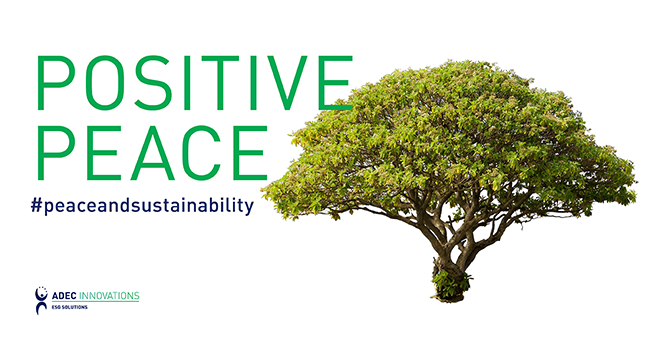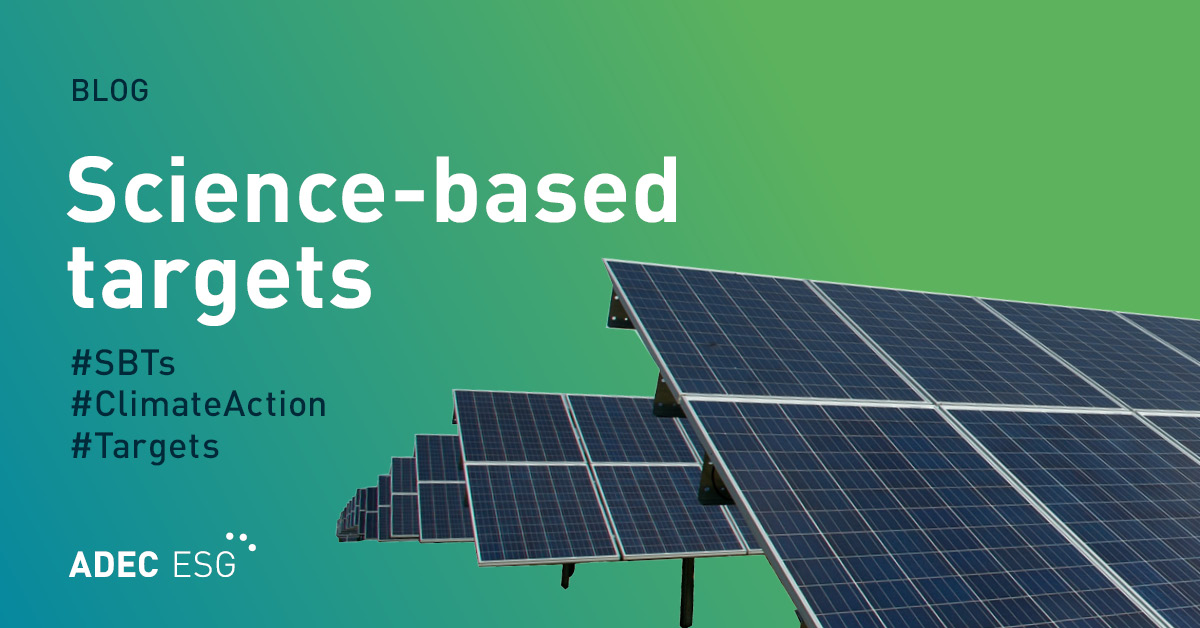This article was updated on April 9, 2025 to ensure accuracy and relevance.
A thriving society is good for business. Stable communities, healthy populations, and skilled workforces create the conditions that companies need to grow, innovate, and adapt. Yet around the world, poverty continues to undermine these conditions, limiting access to education, healthcare, infrastructure, and financial systems that businesses and communities alike depend on.
The effects of poverty in our communities aren’t theoretical. They show up in reduced productivity, workforce churn, fragile supply chains, and markets that never quite reach their potential. In other words, poverty makes it harder for businesses to thrive.
We’re living in a time of extraordinary global wealth—and equally extraordinary inequality. With over half a billion people worldwide continuing to live in extreme poverty, the UN flagged eradicating poverty as Goal 1 of its Sustainable Development Goals, calling on the private sector to play a major role in supporting transformational change.
In this context, it’s worth asking: What role can business play in broadening access to opportunity?
The answer isn’t just ethical. When companies invest in reducing poverty, they help to build a stronger, more resilient foundation for growth. That’s not charity. That’s strategy.
Invest in workforce development and economic inclusion
While talent is everywhere, opportunity often isn’t. A major cause of poverty is the lack of access to education, capital, and jobs. Businesses can help change that by investing in training, financial inclusion, and the types of infrastructure that create opportunities where none existed before.
Companies can:
- Partner with schools, nonprofits, and workforce boards to support vocational training and digital upskilling.
- Create mentorships, apprenticeships, and early career pathways, particularly in rural and low-income communities.
- Offer inclusive financial tools, like microloans, flexible credits products, and financial literacy programs, to reduce dependence on exploitative lending.
Globally, more than 1.4 billion people remain unbanked, disproportionately affecting women, rural residents, and Indigenous communities. Without basic financial access, the risks are higher, the buffers thinner, and the climb steeper. Businesses that help close these gaps don’t just expand access—they expand markets.
That kind of investment isn’t just encouraged, it’s expected. From the UN Guiding Principles on Business and Human Rights to the OECD Guidelines for Multinational Enterprises, global frameworks are clear: responsible business conduct involves removing barriers to economic participation and supporting decent work for all. The companies leaning into workforce inclusion today are better positioned for the social, regulatory, and market realities of tomorrow.
Support women’s economic empowerment
There’s no shortage of evidence that when women thrive, communities follow. But despite years of commitments and campaigns, the global economy still isn’t set up to value women’s labor equally—especially when it comes to women of color, Indigenous women, mothers, and women in low-wage or informal sectors.
According to the National Women’s Law Center, women working full time in the U.S. earn an average of 83 cents for every dollar earned by men, but that figure masks much wider gaps. Black women earn around 66 cents, Indigenous women about 57 cents, Latina women just 52 cents, mothers, 74 cents, and disabled women only 68 cents for every dollar earned by white, non-Hispanic men.
It’s a persistent gap—despite the fact that the U.S. has two federal equal pay laws on the books. Clearly, legislation alone doesn’t close wage gaps if the systems around hiring, promotion, and the valuation of work remain unchanged.
Globally, the picture isn’t much brighter. The World Economic Forum estimates we’re still 134 years away from achieving gender parity at the current pace and the economic cost of that stagnation is staggering: UN Women estimates that gender inequality is costing the global economy $10 trillion each year.
Businesses have both the tools and the incentives to lead here. Leveraging this opportunity means rethinking how roles are filled and how advancement happens, investing in women-led enterprises that too often get overlooked, and designing policies that reflect the realities of caregiving, health, and work outside the 9-to-5 mold. When companies take these steps, they don’t just level the playing field—they unlock potential, strengthen loyalty, and build workplaces that attract top talent.
Tackle infrastructure gaps: water, sanitation, and health
It’s difficult to contribute meaningfully—at work or in life—without the basics. Access to clean water, safe sanitation, and reliable healthcare aren’t just a matter of dignity, they’re a prerequisite for economic participation. When these needs go unmet, businesses feel the strain too.
Higher absenteeism, increased healthcare costs, and supply chain disruptions are just the start. The broader financial impact of poor health is immense, with health issues linked to poor air quality costing the global economy $8.1 trillion annually, or about 7.7% of global GDP. This isn’t just a social issue; it’s a core business risk.
In response, companies are helping communities build resilience by:
- Implementing WASH (Water, Sanitation, and Hygiene) programs for employees and nearby communities,
- Supporting mobile clinics, disease prevention efforts, and public health partnerships,
- And embedding wellness, sanitation, and clean air standards across their operations and supply chains.
These investments do more than reduce risk. They enhance productivity, foster employee loyalty, and contribute to long-term operational stability, while signaling alignment with global standards such as UN Sustainable Development Goals such as SDG 3: Good Health and Well-Being and SDG 6 Clean Water and Sanitation, as well as ILO Standards for health, safety, and working conditions.
In short: healthy communities make for healthier bottom lines—and smarter business strategy.
Engage and invest in indigenous and local communities
In many parts of the world, poverty is deeply local and deeply structural. Indigenous communities, in particular, often face barriers to economic participation that stem from generations of displacement, underinvestment, and limited access to capital or infrastructure.
Despite these challenges, Indigenous peoples play a crucial role in global sustainability, resilience, and inclusive economic growth. Though they make up less than 5% of the world’s population, Indigenous peoples manage over 80% of the planet’s remaining biodiversity, making their land stewardship not just essential for cultural preservation but critical for global sustainability.
Case study: The Haida Nation and Sustainable Partnerships
The Haida Nation, based on Haida Gwaii in Canada, governs with an emphasis on community well-being, sustainable economic development, and shared success—principles that are increasingly being embraced by organizations around the world as they seek to balance economic success with lasting social and economic impact.
The Haida Nation has integrated this governance philosophy into their collaboration with Forest Stewardship Council (FSC)-certified logging companies. This partnership ensures the use of sustainable logging practices that not only protect biodiversity but also avoid the high remediation costs associated with unsustainable logging.
This partnership not only preserves critical ecosystem services, such as carbon sequestration and water filtration but also supports the global economy, with these services valued at an estimated $125 trillion per year globally. Through their sustainable management of forests, the Haida Nation helps reduce risks related to environmental degradation, which benefits both the land and the businesses that rely on it.
By investing in these sustainable practices and meaningful partnerships with Indigenous communities, businesses can foster economic self-sufficiency and poverty alleviation. These efforts not only promote inclusive prosperity and contribute to resilience and economic health of Indigenous communities but also shift the focus from short-term aid to long-term self-determination and shared growth. In doing so, businesses help create stronger, more resilient communities, offering stable markets, reliable labor, and reduced risks for the long term.
Build climate resilience by tackling poverty
Climate change is rapidly intensifying many of the drivers of poverty, particularly in regions critical to global agriculture, logistics, and manufacturing. Extreme heat, floods, droughts, and displacement aren’t just humanitarian crises; they directly threaten market stability, operational continuity, and long-term growth prospects.
Today, nearly 700 million people worldwide live on less than $2.15 a day. Compounding crises, including climate disruption, conflicts, mounting debt, and pandemic-related setbacks—have severely undermined poverty reduction efforts, making the UN’s goal of eliminating extreme poverty by 2030 increasingly out of reach. For businesses, this means greater volatility in labor markets, increased operational risks in vulnerable regions, and rising costs in supply chains dependent on stability.
Companies recognizing these interconnected threats are:
- Investing directly in climate adaptation projects tailored to vulnerable communities.
- Supporting nature-based solutions, climate-resilient infrastructure, and community-led planning.
- Embedding climate vulnerability and poverty assessments into scenario planning and supply chain due diligence.
Building climate resilience is about securing your bottom line in a world that is growing more unpredictable and recognizing that climate change and poverty aren’t separate issues—they’re linked. By investing in climate resilience, businesses can help break the cycle of poverty while strengthening the systems that their value chains depend on. Tackling both ensures long-term stability, reduces risk, and opens the door to shared prosperity.
Shared prosperity is smart business
Poverty is often framed as a personal failure, but for many, it stems from systemic issues beyond their control. For business, the takeaway is simple: addressing poverty is central to building the kind of stable, resilient environment that long-term success depends on. When communities succeed, so do the businesses that operate within them.
By investing in inclusive development, businesses can create the condition for growth—for both shareholders and every stakeholder connected to their operations. A strong business doesn’t stand apart from society—it stands with it.
ADEC ESG works with global companies to transform their operations and support their sustainability goals. From improving sustainability and ESG reporting to implementing strategic change, talk with our team today to learn more about how we can support your organization.
This blog provides general information and does not constitute the rendering of legal, economic, business, or other professional services or advice. Consult with your advisors regarding the applicability of this content to your specific circumstances.




